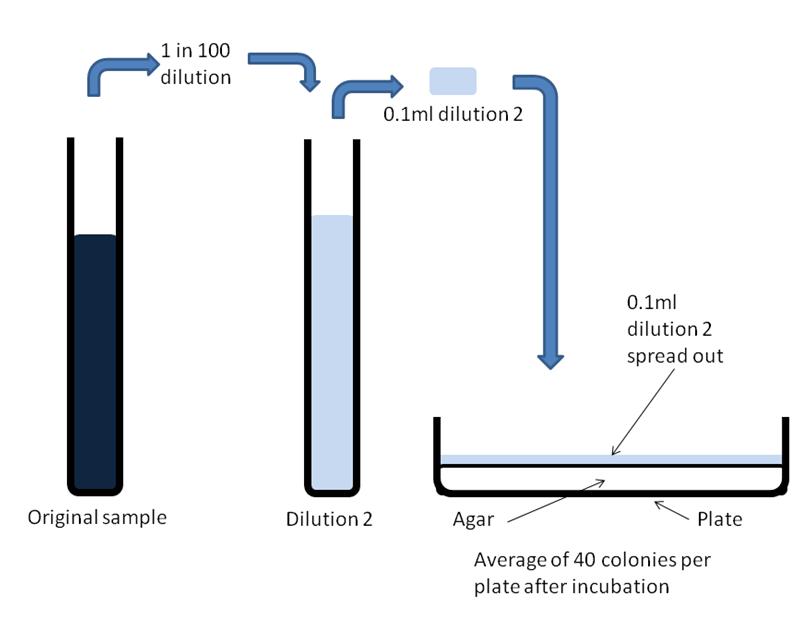

|
Microbial Growth Website |
|
IBERS: Institute of Biological, Environmental and Rural Sciences |



|
Cell Concentration Calculation |
|
Use your browsers previous page button to return to the Plate Counting page. Figure 5: The plate count of 40 colonies per plate for dilution 2 was selected for the calculation of the cell concentration in the original sample because it lies between 30 and 300 colonies per plate. The diagram summarises the steps used to get the plate count of 40 colonies per plate for dilution 2. To calculate the concentration of cells in the original sample you must work backwards through the diagram starting with the colony count. The 40 colonies means that 0.1ml of dilution 2 must on average have contained 40 viable cells (i.e. 40 cells/0.1ml). We would like to express concentration on a per ml basis (i.e. as cells/ml). If 0.1ml of dilution 2 contains 40 cells then 1ml must contain ten times as many cells, giving a cell concentration of 400 cells/ml for dilution 2. Dilution 2 is 100 times more dilute than the original sample which means that each ml of the dilution contains 100 times less cells than the original sample. Thus, to get the cell concentration in the original sample we must multiply the cell concentration in dilution 2 (400 cells/ml) by 100. This gives the cell concentration in the original sample as 40,000 cells/ml. |
